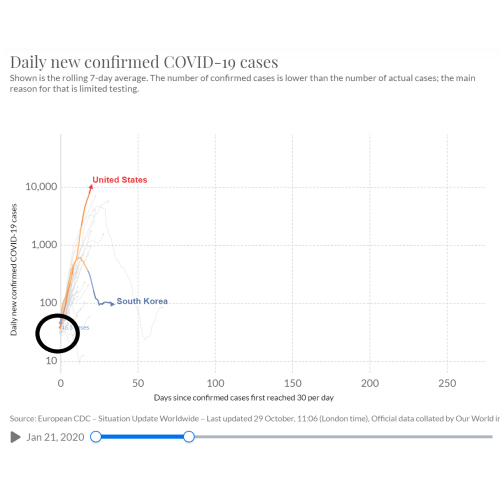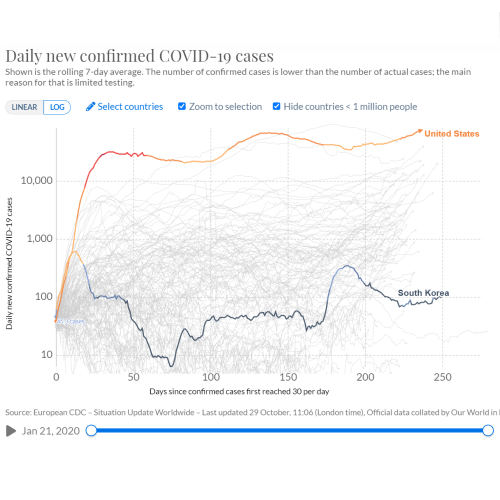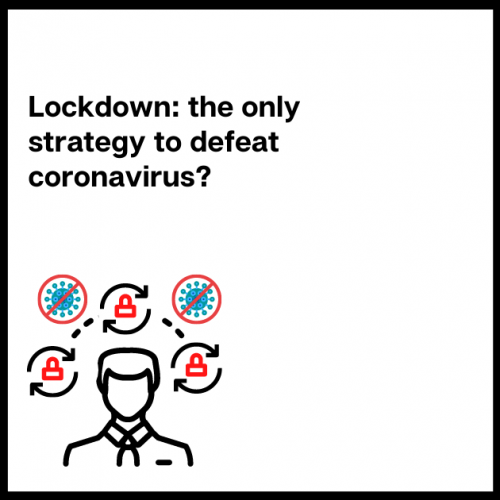One of my fears is that I’ll always be alone. Specifically, I cannot programme my mind to accept the bone-crushing silence and darkness that concurrently welcomes my day (I’m an early riser) and forces my eyes open at night. (I’m an insomniac).
My fear pales in comparison to the millions of individuals who face the prospect of losing a loved one to COVID-19. Perhaps it is too soon to write about the modern-day horrors of living in a pandemic.
I respectfully disagree.
I want to sow the seeds of a line of questioning, that I hope will occupy our public discourse for many years to come.
1. COULD 2020 HAVE BEEN DIFFERENT?
Yes.
It is my position that the solution presented by numerous governments in the form of multiple lockdowns is at best, inadequate. In my mind, lockdowns epitomise a lack of initiative, planning and investment in public health.
Alternative strategy/ies in the form of advance pandemic planning and timely execution could have prevented countless deaths.
2020 did not have to be our year of reckoning.
2. WHY AM I SO RESOLUTE?
One in five folks are already beneficiaries of pandemic planning, specifically South-Eastern Asian countries.
There are no prospects of a lockdown in these countries: China, Singapore, Hong Kong, Japan, South Korea, Thailand and Vietnam.
The combined population of the countries mentioned above is 1.74 billion (with admittedly, 80% being China).
(I appreciate that China had one of the toughest lockdowns. But this is a natural consequence of its massive population and a lockdown is merely insufficient. Look at India with its similar sized population that also implemented a brutal lockdown but without any planning. As a result Indian cases of COVID-19 are catastrophically high).
South-East Asian countries are returning to normality: schools, offices, cinemas and malls are all open/reopening.
In other words, one in five of the world’s population is living under pre-COVID conditions. The sale of Louis Vuitton handbags is through the roof, indicating China’s middle class are pursuing their favourite national past-time of buying status symbols.
3. WHAT ARE THEY DOING RIGHT THAT WESTERN EUROPE, THE USA, INDIA AND SOUTH AMERICA ARE NOT?
These countries had a pandemic plan (which the USA also had) but they were also prepared and moved swiftly to execute their plans.
What does preparedness look like?
The starting point to being “PREPARED” is to acknowledge that a pandemic can affect your country and that viruses have no respect for national borders. Diseases such as Ebola, MERS and SARS were excellent candidates for full-blown pandemics but were nipped in the bud.
Given the source of origin of past pandemics, it requires countries to acknowledge that one of China’s most significant exports is not just manufactured goods (e.g., iPhones, solar panels etc) but is also disease.
The transmittance of disease has the potential to affect the rest of the world and not just China’s neighbours.
To argue that European governments could not have predicted this or we are not used to pandemics, or covid-19 is very contagious, are such a lazy, low-brow and ineffectual answer that it makes my blood boil.
The entire point of government is to protect its population from external threats, and that involves predicting what these threats are and scenario planning to counter these threats.
Everyone had a plan except the US and Western Europe
As it rarely is with reality, the answer is not black and white.
The USA had a plan
George W Bush described a pandemic that was not nipped in the bud as an “inferno” that could not be controlled and so his government had extensive pandemic planning, as did Obama.
What went wrong?
Having a plan on paper means nothing if it just gathers dust. It’s akin to my plan to run the London marathon without ever walking (let alone running) a mile.
Plans mean nothing without (i) acknowledging there is a problem (ii) executing the project you have with dedicated commitment.
The South Koreans predicted coronavirus as a pandemic and were as a result, better prepared
South Korea and the USA both reported their first cases of COVID-19 and then the trajectory of cases took markedly different directions.

Current rate of case detection…

The reason for this is that South Korea already had a test for covid-19 that it had been working on for months, and was ready to deploy en masse when COVID-19 cases first started appearing.
In the NY Times this week, there is an excellent video documentary that explains how the South Korean Centre for Disease Control used the lessons learnt from its American counterpart, the CDC to identify coronavirus’ pandemic potential. They then went to work: ie, developing and mass producing coronavirus test kits.
The USA meanwhile struggled: the government did not take the threat seriously, even though its scientific experts were telling them that coronavirus was highly contagious, airborne and that this was no flu.
America simply did not have (i) a coronavirus test ready or (ii) enough test kits or (iii) the capacity (in terms of labs and manpower) to quickly test vast numbers of its population.
Another aspect of preparedness: Singapore
Singapore immediately started its program of contact tracing as soon as coronavirus was detected. This entailed giving basic training to thousands of volunteers before the pandemic broke out. Singapore has regular mock practice runs involving different public agencies and public volunteers for pandemics and other disasters.
No country can afford a team of thousands of contact tracers, but you can (as with voluntary armed services) train volunteers before a pandemic and deploy them at the right time.
In less wealthy, Vietnam the government quickly used all means available to persistently inform its population to take necessary hygiene measures, such as regular handwashing and wearing a mask.
Houston, we have a problem
Countries like South Korea and Singapore plan to a granular level of detail, which Western countries did not even anticipate.
Deploying existing public health funding to preserve life
Germany has not been as viciously hit by coronavirus as the rest of Europe. I believe its because Germany has deployed public health funding differently. Germany never panicked about ventilators because it had more ventilators and ICU beds per capita than it knew what to do with.
4. ROLE OF PUBLIC HEALTH PLANNING
The role of public health planning has to encompass:
- Predicting and managing external threats to the local population, that is, pandemics.
- Invest in equipment/hospitals/doctors etc. for when things go south (and they always do).
- Detailed implementation plans as to what exactly happens when a pandemic hits. Are we going to shut down schools and malls? Or is it easier to instal thermometers at public access points?
- How are we going to quarantine vast sums of our population separately from their family and medical facilities? How many baseball gyms do can we convert to quarantine facilities?
5. FINALLY, GET THE EASIEST THINGS RIGHT
The simplest thing for government’s to do in any pandemic are first, acknowledge and follow the lead of medical experts. This is the difference between Chancellor Merkel and Trump. Angela Merkel (along with many leaders) gave medical experts their full backing.
Donald Trump has gone out of his way to undermine everything Dr Fauci has said.
Secondly, be open and honest about the dangers that a pandemic entails. Immediately communicate what precautions the public should take and why they are being asked to comply. For example, wear a mask because this disease is potentially airborne and by wearing a mask you’ll protect the lives of others. Don’t tell people masks are optional: it is unthinkable that you and I would not wear a seat belt and the infringement on your person/the government telling you what to do etc, are identical with both a seat belt and a mask. Also, lead by example and that entails, government employees being mandated to wear a mask at all times.
6. CLOSING
This pandemic has demonstrated the worst (and best) aspects of government. South East Asian countries have shown leadership, initiative and a level of preparedness that has prevented many deaths and not damaged their economies beyond repair.
The US has shown us the worst aspect of governance.
My immediate lessons from the above are this:
- South East Asian countries have less stringent privacy restrictions, enabling them to contact trace quickly and precisely. In the West, we must ask ourselves to what extent do we value privacy when so many lives are at stake.
- Governments should focus on saving lives of its citizens. This requires them to have empathy and value human life. A failure to do so has catastrophic effects. In the US, it has resulted in 200,000 (and counting) people dying and spending a trillion US dollars will not bring these people back.
- The job of government in a pandemic is to lead especially by example and by deferring to the opinion of technical experts.
- A government has to inform its population of ALL the risks involved if basic safety measures are not followed. By not acknowledging that coronavirus is airborne, is tragically, not the stupidest thing that Trump has done.
- The importance of civic responsibility. I am my brother’s keeper. If I do not protect my community by wearing a mask and practicing basic hygiene practices, am I a responsible citizen?
- The USA and India currently have two things in common: sky-rocketing cases and conspiracy theories. An ill-informed (albeit college degree educated) population is as dangerous as any deranged or disillusioned leader and/or American despot.
That’s it from me today.
